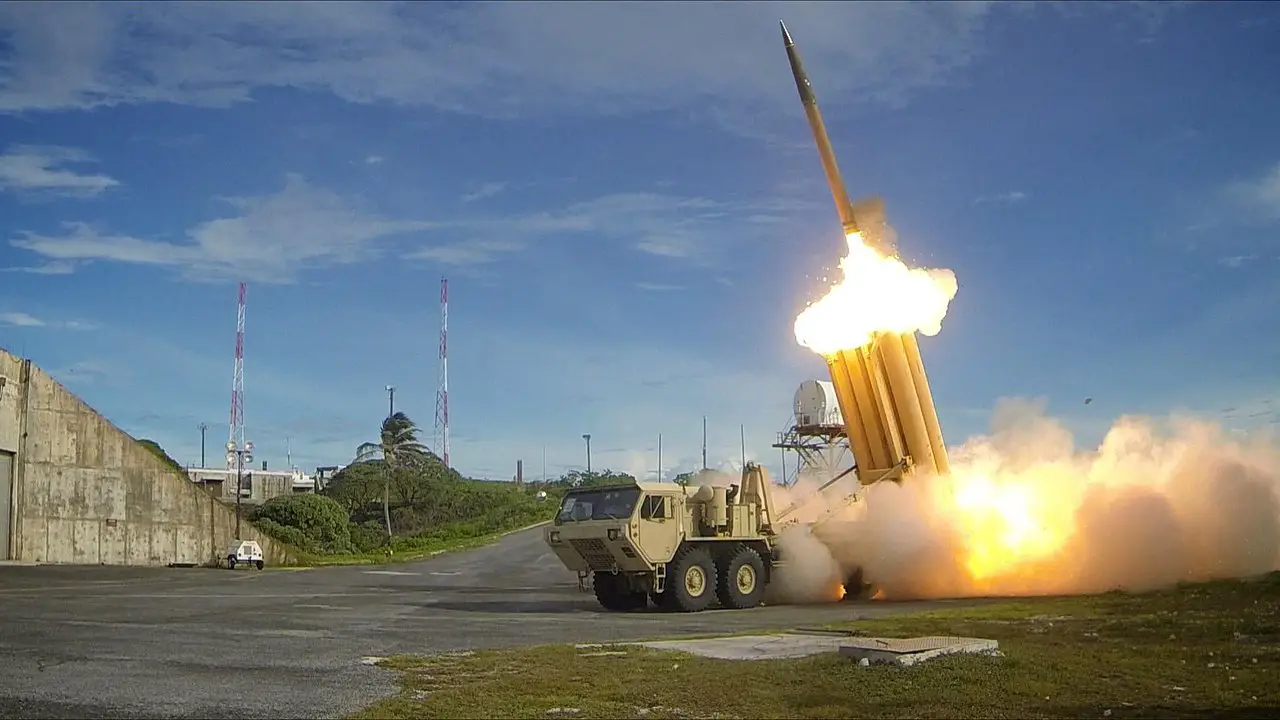The U.S. State Department has made a determination approving a possible Foreign Military Sale to the Government of the United Arab Emirates of Terminal High Altitude Area Defense (THAAD) System Missiles, THAAD Fire Control and Communication Stations, and related equipment for an estimated cost of $2.245 billion. The Government of the United Arab Emirates (UAE) has requested to buy ninety-six (96) Terminal High Altitude Area Defense (THAAD) missile rounds; two (2) THAAD Launch Control Stations (LCS); two (2) THAAD Tactical Operations Stations (TOS); construction activities; encryption devices; secure communication equipment; COMSEC equipment; and other related elements of logistical and program support. The principal contractor will be Lockheed Martin Space Systems Corporation, Sunnyvale, CA.
Terminal High Altitude Area Defense (THAAD), formerly Theater High Altitude Area Defense, is an American anti-ballistic missile defense system designed to shoot down short-, medium-, and intermediate-range ballistic missiles in their terminal phase (descent or reentry) by intercepting with a hit-to-kill approach. THAAD was developed after the experience of Iraq’s Scud missile attacks during the Gulf War in 1991. The THAAD interceptor carries no warhead, but relies on its kinetic energy of impact to destroy the incoming missile. Originally a United States Army program, THAAD has come under the umbrella of the U.S. Missile Defense Agency. The Navy has a similar program, the sea-based Aegis Ballistic Missile Defense System, which also has a land component (“Aegis ashore”). THAAD was originally scheduled for deployment in 2012, but initial deployment took place in May 2008. THAAD has been deployed in the United Arab Emirates, Israel, Romania, and South Korea.

Sometimes called Kinetic Kill technology, the Terminal High Altitude Area Defense (THAAD) missile destroys missiles by colliding with them, using hit-to-kill technology, like the MIM-104 Patriot PAC-3 (although the PAC-3 also contains a small explosive warhead). This is unlike the Patriot PAC-2 which carried only an explosive warhead detonated using a proximity fuze. Although the actual figures are classified, THAAD missiles have an estimated range of 125 miles (200 km), and can reach an altitude of 93 miles (150 km). A THAAD battery consists of at least six[41] launcher vehicles, each equipped with eight missiles, with two mobile tactical operations centers (TOCs) and the AN/TPY-2 ground-based radar (GBR); the U.S. Army plans to field at least six THAAD batteries, at a purchase cost of US$800 million per battery.
By September 2018 MDA plans to deliver 52 more interceptors to the Army. In June 2020 the Senate Armed Services Committee draft of the FY2021 DoD budget allocated funding for the eighth THAAD battery. The THAAD missile is manufactured at a Lockheed Martin facility near Troy, Alabama. The facility performs final integration, assembly and testing of the THAAD missile. The THAAD Radar is an X-Band active electronically scanned array Radar developed and built by Raytheon at its Andover, Massachusetts Integrated Air Defense Facility. The THAAD radar and a variant developed as a forward sensor for ICBM missile defense, the Forward-Based X-Band – Transportable (FBX-T) radar, were assigned a common designator, AN/TPY-2, in late 2006/early 2007. The THAAD radar can interoperate with Aegis and Patriot systems, in a 3-layer antimissile defense.
















